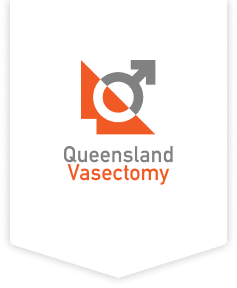Do You Get Stitches After a Vasectomy Procedure?
If you are thinking about getting a vasectomy, one of your questions might be “Do you get stitches after vasectomy?” The answer will depend on what type of vasectomy procedure you have chosen. If you are looking to have a no-scalpel vasectomy, then the quick answer is no. Let’s talk about why this is so and some important things you need to do for recovery after the operation.
Understanding the No-Scalpel Vasectomy
A no-scalpel vasectomy is a permanent male birth control procedure that is minimally invasive. In a conventional vasectomy, the scrotum is cut open; however this technique does not require any incisions on it. During this method, a small piercing (like an IV) is made to get to vas deferens. Less bleeding occurs as a result of using these methods, there is also reduced risk of infection and quicker recovery process.
Why No Stitches Are Needed
Instead of cutting the scrotum, in a no-scalpel vasectomy, the doctor simply makes a tiny piercing. This small hole closes up by itself and does not need to be sewn shut with stitches. Without sutures there is less need for aftercare and discomfort is minimised as well.
Post-Procedure Tips for No-Scalpel Vasectomy
Even though the no-scalpel vasectomy is less invasive than other procedures, post-operative care following no-scalpel vasectomies is important too!
Below are some tips to ensure a smooth recovery:
- Rest and Ice:
- Rest for the first 24 hours post-procedure.
- Apply ice packs to the scrotum for 10-15 minutes at a time to reduce swelling and discomfort. Do this periodically for the first couple of days.
- Avoid Strenuous Activities:
- Refrain from heavy lifting, vigorous exercise, and sexual activity for about a week to allow proper healing.
- Wear Supportive Underwear:
- Tight-fitting underwear or a jockstrap can provide necessary support and help minimise swelling.
- Manage Pain:
- Over-the-counter pain relievers, such as ibuprofen or paracetamol, can help alleviate any discomfort.
- Keep the Area Clean:
- Maintain good hygiene but avoid submerging the area in water (e.g., no swimming or hot tubs) for at least a week. Gentle showers are fine.
- Monitor for Complications:
- Watch for signs of infection, such as a fever.
- Contact your doctor if you experience severe pain, fever, or any unusual symptoms.
- Follow-Up Appointment:
- Schedule a follow-up visit with your doctor if recommended by your doctor to ensure proper healing and to discuss when it’s safe to resume all activities.
- Semen Analysis:
Use alternative contraception until a semen analysis confirms the absence of sperm. This usually occurs about three months post-procedure.
Final Thoughts
A no-scalpel vasectomy is an effective and minimally invasive method for permanent male contraception. Since it does not require stitches, the recovery process is generally quicker and less uncomfortable. By following the proper aftercare outlined above, you can ensure a smooth recovery and peace of mind.
For more detailed information and personalised advice, visit or contact Queensland Vasectomy . You may also check out other blog articles on no-scalpel vasectomy here.
Related Post
Vasectomy Effects on the Body: 5 Most Common Questions
Vasectomy is a simple and effective form of permanent contraception, but many men have concerns about its physical effects. From questions about testosterone levels to worries about changes in sexual performance, understanding how…
Sex After Vasectomy: Enhancing Sexual Satisfaction for Couples
Many men and their partners have questions and concerns about how a vasectomy might affect their sex life. This article aims to provide a comprehensive overview of what to expect regarding sex after…
Understanding Vasectomy: Myths, Facts, and What to Expect
Vasectomy is a highly effective and increasingly popular method of permanent contraception. However, despite its benefits, many men are still hesitant due to various misconceptions. In this blog, we’ll address some of the…









